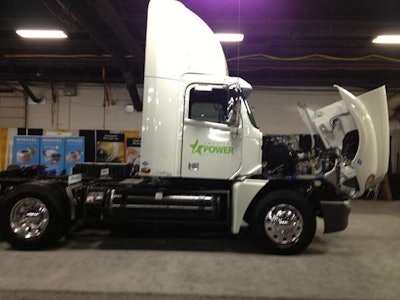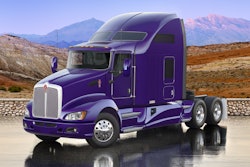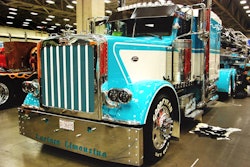
That’s not to say that fleets aren’t running natural gas trucks and making money doing so. But while the cost of fuel can – in some cases – be close to half the price of diesel fuel today, the upcharge for new trucks is substantial: from $25,000 to $40,000, depending on vehicle configuration and options. That can be tough for fleets to swallow.
But there may be an end-run around those steep acquisition costs. Glider kits – new frames, cab chassis mounted with refurbished powertrain components may give fleets a more-affordable way to get in the natural gas game.
At a press conference at the Great American Truck Show in Dallas two weeks ago, American Power Group (APG) showcased its lineup of dual-fuel glider kits, available in both CNG and LNG configurations. These trucks are registered as new, 2014 model trucks yet can be purchased for up to $50,000 less than an OEM-built, non-glider, dedicated natural gas truck, according to APG.
There was a lot of buzz about this glider concept at GATS, with even a few of the old TMC Industry Wizards getting their heads turned by the idea. I tend to think it’s a good idea as well and one that’s well worth watching.

First off, I think that the more people that experiment with natural gas and figure out how to make it work in their applications the better that is for all of us, both as a nation and an industry. OEMs’ routinely concede the acquisition cost of new trucks is the number obstacle they face when trying to persuade fleets to give them a try. And while they’d much rather see their trucks go into fleets as opposed to natural gas glider kits, the more people that get comfortable with this technology, the larger the eventual market for new natural gas trucks gets as production ramps up and economies of scale start to bring prices down. In the short term, of course, lower acquisition costs means quicker ROI times for fleets. And, again, all the experience gained by natural gas glider fleets will transfer seamlessly to new vehicles and expanded fleets once they become familiar and comfortable with natural gas.









